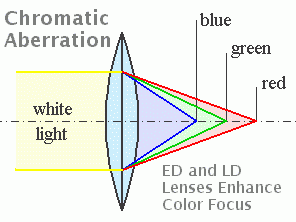March 40X ED Scope–Now See Your Bullet Holes at 600
The big news at the recent NBRSA 600-yard Nationals was Don Nielson’s dominant performance, which included a new 1.776″ 10-shot NBRSA-record group. From a hardware perspective, however, the major story was the 40X ED March scope used by Lou Murdica. With this new, ultra-sharp scope with ED (low dispersion) glass, Lou was able to see his 6mm and 6.5mm bullet holes clearly most of the time, and that helped him aim his shots more precisely. Lou finished third overall, second in two-gun score, and posted the Light Gun high score, with a 50-3X, 1.745″ target.

Until now, ED or low dispersion glass was only available in premium camera lenses or top of the line spotting scopes. This is a significant enhancement for benchrest scopes. “ED” or “LD” stands for low dispersion glass–this lessens chromatic aberration, which can cause an image to look fuzzy. All things being equal, low-dispersion lenses transmit a sharper image because different colors (wavelengths) don’t separate as they pass through the glass.

We have looked through various scopes at 6mm bullet holes at 600 yards. With a Leupold 8-25x LRT you can sometimes (in perfect conditions) see holes in the white but they are fuzzy and indistinct. With 36X Weavers or Sightrons, you have more magnification but most examples don’t have the sharpness to pick out 6mm holes consistently at 600. With a 12-42x Nightforce at max power you can see 6mm holes in the white when conditions are good, but it’s pretty difficult otherwise. With the March, Lou reports: “I could easily see 6mm bullet holes in the white or the blue in the mornings. At mid-day holes in the white were still really sharp, but shots in the blue were getting harder to see. At the end of the day when the mirage was bad, I could still see holes, but you needed to wait for the conditions to clear a bit.” Lou added: “On the March the image is bright and sharp all the way to the edge. It’s really noticeably better at the edges than other scopes.”
If all March 40X ED scopes perform as well as Lou’s, then this is a major advancement that may change the way the 600-yard game is played. If the March scope lets you see your bullet holes reliably, in all but the worst mirage conditions, then that really does give a “competitive advantage” over other scopes. We can expect some 600-yard competitors will trade in their Nightforces for March EDs. Lou tells us “many, many top short-range BR shooters are going with the March–Tony Boyer, Billy Stevens, Mike Ratigan–you name it.” But in short-range BR, it is not the resolving power that has driven sales of the March–it is the tracking reliability. Lou explained “In short-range BR, maintaining shot to shot Point of Impact (POI) is do or die. That’s why guys ‘lock up’ Sightrons and Leupolds. But with the March the POI stays constant. And when you do spin the knobs, you get totally repeatable tracking. I was clicking throughout the 600-yard match–even in the middle of a group. When I came back to my original zero it was always dead-on.” Lou noted: “Since I’ve been using the March, my shooting has improved dramatically. I’ve been up at the top and winning more than ever. Even at 300 yards the March makes a big difference. At the 300-yard Nationals Eric Stanton and I were the only two guys who used the scopes and we cleaned house with those things. I finished second overall and Eric finished first.”
The March scope, built by Koto Precision of Japan, is a 40-power, non-zoom, side-focus design, with 1/8-MOA clicks and 72 MOA of total elevation. Weighing 21.2 ounces, it has a 30mm tube, 52mm front objective, and a 1.3mm exit pupil. In the USA, March scopes are sold exclusively by Kelblys. Price is $2100.00 with a choice of four reticles. For more info, click HERE for the March data sheet.












 Olympic-class shooters will be competing April 25-May 3, in Sydney, Australia as part of the ISSF World Cup series of shooting competitions. At World Cup events, hosted at various sites around the world, shooters can earn points towards Olympic elegibility for the next Olympic Games. In Sydney, air pistol and air rifle shooters, and small-bore (rimfire) rifle and pistol shooters will compete in individual and team competition at 10, 25, and 50 meters. To learn more about World Cup shooting, visit
Olympic-class shooters will be competing April 25-May 3, in Sydney, Australia as part of the ISSF World Cup series of shooting competitions. At World Cup events, hosted at various sites around the world, shooters can earn points towards Olympic elegibility for the next Olympic Games. In Sydney, air pistol and air rifle shooters, and small-bore (rimfire) rifle and pistol shooters will compete in individual and team competition at 10, 25, and 50 meters. To learn more about World Cup shooting, visit 




